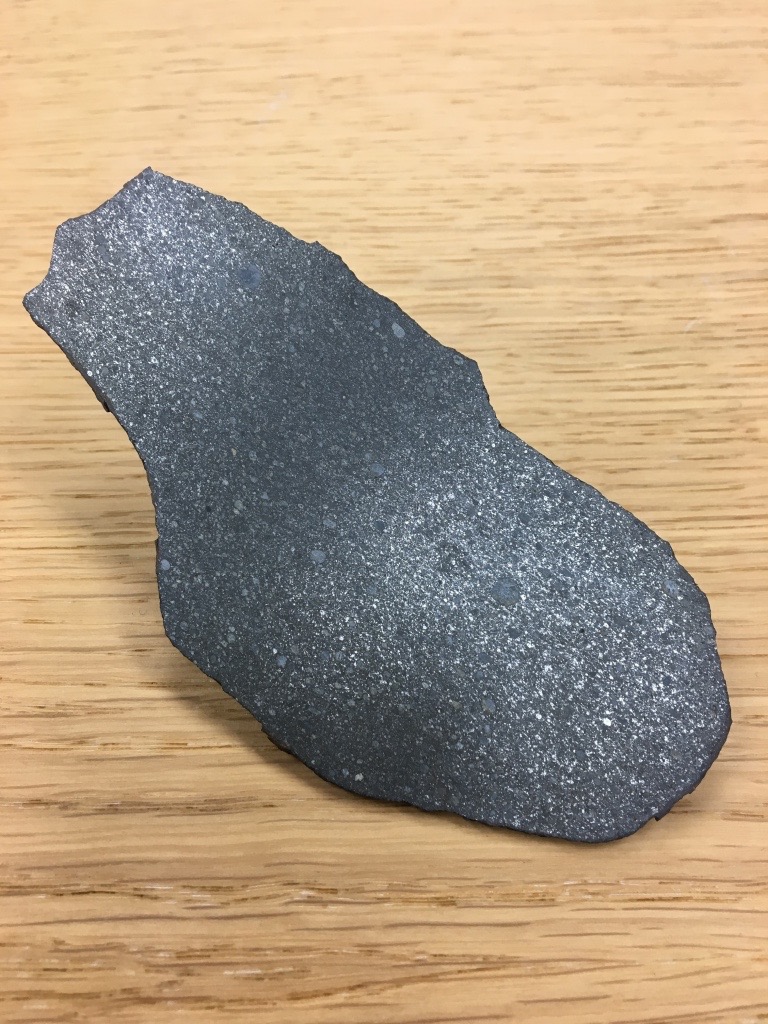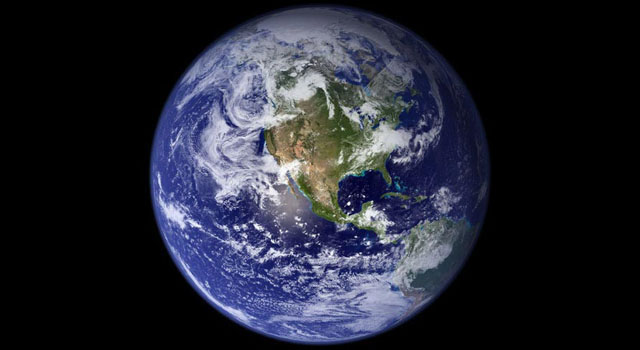Meteorite Studies Reveal Surprises About Earth's Formation

Scientists now have a better understanding of three concepts regarding the early Earth: what kind of raw materials coalesced to form Earth long ago, when water arrived on our planet, and why Earth and its moon have such similar compositions.
Two studies published Wednesday (Jan. 25) in the journal Nature suggest that Earth's main building blocks were rocks similar to meteorites known as enstatite chondrites, and that the planet got most of its water gradually during the formation process, rather than in one big burst toward the end.
"The results presented in these papers lead to the troubling conclusion that the meteorites in our collection are not particularly good examples of Earth's building blocks," Richard Carlson, a geochemist at the Carnegie Institution for Science in Washington, D.C., wrote in a commentary article that accompanied the two studies in Nature. (Carlson was not involved in either study.) [Photo Timeline: How the Earth Formed]
When did water come to Earth?
Scientists have known since the 1970s that Earth rocks' oxygen-isotope abundance differs from that of most meteorites, except for enstatite chondrites, Carlson wrote. (variants of the same element that have different numbers of neutrons in their atomic nuclei.)
But Earth rocks and enstatite meteorites differ in elemental composition, so most researchers have used Earth-formation models based on different meteorites called carbonaceous chondrites, which are rich in volatiles (compounds with low boiling points, such as water), he added.
By tracking different isotopic abundances in Earth rocks and meteorites, both new Nature studies concluded that carbonaceous-chondrite-like building blocks were not common late in the Earth's formation history.
Specifically, one of the studies — by University of Chicago geochemist Nicolas Dauphas — suggested that several different meteorite types were likely responsible for the first 60 percent of Earth's growth, while almost all of the remaining 40 percent came from enstatite chondrites.
Breaking space news, the latest updates on rocket launches, skywatching events and more!
The second study, performed by Mario Fischer-Gödde and Thorsten Kleine of the University of Münster in Germany, bolstered that conclusion, showing that enstatite-like rocks probably dominated Earth's late accretion history.
These findings indicate that water came to Earth throughout the planet's formation history, and not just in a flurry of carbonaceous chondrites and/or comets near the end, as some researchers have proposed, Carlson wrote.
"If the last 0.5 percent of material accreted by Earth had been composed of a particular type of volatile-rich carbonaceous chondrite, known as a CI chondrite, an amount of water equivalent in mass to Earth’s oceans would have been added to the planet," he wrote. "Fischer-Gödde and Kleine's measurements instead show that this late-accreted material consisted of relatively 'dry' enstatite chondrites."
However, this conclusion still leaves a question: Why doesn't Earth's surface composition match that of enstatite chondrites? Carlson suggested two possible explanations: Earth's deep interior is very different from the surface (which is unlikely for a variety of reasons, he wrote), or, as Dauphas suggested in his paper, the enstatite chondrites were altered on Earth's surface as the planet evolved.
Why is the moon so similar to Earth?
Dauphas' study also sheds light on how the moon formed. Most astronomers think that, long ago, one or more Mars-size bodies smashed into the proto-Earth, blasting out material that eventually coalesced to form the moon.
Models suggest that such giant impacts likely would have created a moon whose composition was different from Earth's, because proto-Earth and the impactor(s) likely would have been made of different stuff. But measurements of Earth, the moon and enstatite meteorites "have almost indistinguishable isotopic compositions," Dauphas wrote in his new study.
The apparent problem can be traced to older models that suggest a diversity of meteorites formed Earth, Dauphas added. His research, on the other hand, indicates that the proto-Earth and the moon-forming impactor(s) probably formed in the same "isotopic reservoir," which was dominated by enstatite chondrites.
"Accordingly, the giant impactor that formed the moon probably had an isotopic composition similar to that of the Earth, hence relaxing the constraints on models of lunar formation," Dauphas wrote.
Follow Elizabeth Howell @howellspace, or Space.com @Spacedotcom. We're also on Facebook and Google+. Original article on Space.com.

Elizabeth Howell (she/her), Ph.D., was a staff writer in the spaceflight channel between 2022 and 2024 specializing in Canadian space news. She was contributing writer for Space.com for 10 years from 2012 to 2024. Elizabeth's reporting includes multiple exclusives with the White House, leading world coverage about a lost-and-found space tomato on the International Space Station, witnessing five human spaceflight launches on two continents, flying parabolic, working inside a spacesuit, and participating in a simulated Mars mission. Her latest book, "Why Am I Taller?" (ECW Press, 2022) is co-written with astronaut Dave Williams.


